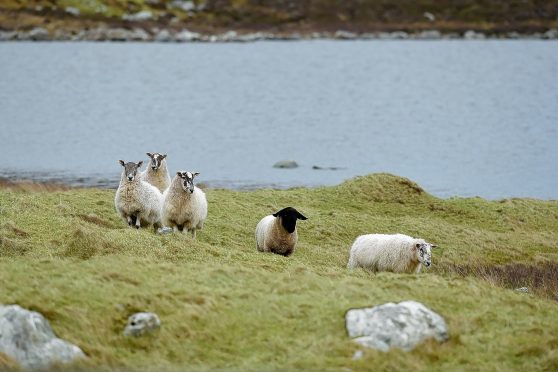When someone asks me ‘how do you make hill farming and crofting profitable?’ I highlight the following four key things that we are now encouraging all hill farmers and crofters to do.
Firstly, test the pH and soil nutrient status of your inbye fields and develop an action plan to bring these up to what you need to provide the forage and fodder you want from those fields.
We assessed all our fields in 2013 and targeted liming and P and K at those fields we wanted to improve productivity on. A re-survey is summer 2016 showed that we had moved in the right direction and that those fields are now mobilising fertiliser to best effect.
Secondly, manage all your grazing resource to best effect for all your needs throughout the year.
Since spring 2016 we have been making much more use of the grass growth on the hill during spring and summer and also paying close attention to grass heights in our inbye fields, moving stock out or in when sward stick measurements suggest we need to. During summer 2016 this resulted in our grass looking the best it has for a while and we got a bumper crop of 400 silage bales.
Thirdly, manage your sheep flock or cattle herd as a group of individuals and manage those individuals to best meet their own needs.
You may think these are easy to say but less easy to put into practice. But making best use of our automated weigh crate, auto-drafter and new conveyor has markedly reduced the time needed to assess the performance of individual sheep and take appropriate management decisions.
Lastly, take a long hard look at your own farm or croft and see where there may also be an opportunity to develop other income streams.
Relying on the crop of lambs and/or calves each autumn as a main income source is a risky business, especially given that extreme weather events can have major unavoidable impacts on productivity.
We have welcome additional income coming from our Strathfillan Wigwams on-farm diversification business, have put in place a range of SRDP agri-environment measures, and are assessing where we might integrate some new woodland plantings without adverse impact on the farming system.
*In his monthly column, SRUC’s Professor Davy McCraken provides an insight into the work being done at the college’s hill and mountain research centre at Kirkton and Auchtertyre
